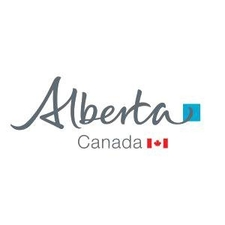83C
Type of resources
Topics
Keywords
Contact for the resource
Provided by
Formats
Representation types
Update frequencies
status
-

All available bathymetry and related information for Goldeye Lake were collected and hard copy maps digitized where necessary. The data were validated against more recent data (Shuttle Radar Topography Mission 'SRTM' imagery and Indian Remote Sensing 'IRS' imagery) and corrected where necessary. The published data set contains the lake bathymetry formatted as an Arc ascii grid. Bathymetric contours and the boundary polygon are available as shapefiles.
-

All available bathymetry and related information for Goldeye Lake were collected and hard copy maps digitized where necessary. The data were validated against more recent data (Shuttle Radar Topography Mission 'SRTM' imagery and Indian Remote Sensing 'IRS' imagery) and corrected where necessary. The published data set contains the lake bathymetry formatted as an Arc ascii grid. Bathymetric contours and the boundary polygon are available as shapefiles.
-

All available bathymetry and related information for Goldeye Lake were collected and hard copy maps digitized where necessary. The data were validated against more recent data (Shuttle Radar Topography Mission 'SRTM' imagery and Indian Remote Sensing 'IRS' imagery) and corrected where necessary. The published data set contains the lake bathymetry formatted as an Arc ascii grid. Bathymetric contours and the boundary polygon are available as shapefiles.
-

The Geological Atlas of the Western Canada Sedimentary Basin was designed primarily as a reference volume documenting the subsurface geology of the Western Canada Sedimentary Basin. This GIS dataset is one of a collection of shapefiles representing part of Chapter 8 of the Atlas, Middle Cambrian to Lower Ordovician Strata of the Western Canada Sedimentary Basin, Figure 21d, Upper Cambrian - Lower Ordovician Lithology Carbonates. Shapefiles were produced from archived digital files created by the Alberta Geological Survey in the mid-1990s, and edited in 2005-06 to correct, attribute and consolidate the data into single files by feature type and by figure.
-

The Geological Atlas of the Western Canada Sedimentary Basin was designed primarily as a reference volume documenting the subsurface geology of the Western Canada Sedimentary Basin. This GIS dataset is one of a collection of shapefiles representing part of Chapter 31 of the Atlas, Petroleum Generation and Migration in the Western Canada Sedimentary Basin, Figure 17, Lower Jurassic Petroleum System. Shapefiles were produced from archived digital files created by the Alberta Geological Survey in the mid-1990s, and edited in 2005-06 to correct, attribute and consolidate the data into single files by feature type and by figure.
-

This GIS dataset depicts the Foothills Erratics Train in Southwestern Alberta, Canada (GIS data, point features). The erratics train is composed of a distinctive type of glacially transported erratic, whose distribution might relate to coalescence of the Laurentide and Cordilleran Ice Sheets. These data were compiled from published sources. no attempt was made to verify their accuracy. These data comprise the point features to accompany Alberta Geological Survey Map 604, Glacial Landforms of Alberta, Canada. The data were created in geodatabase format and output for public distribution in shapefile format.
-

This GIS dataset is part of a GIS version of AGS Map 150, Sheets 1 - 6, as mapped at 1:250,000-scale by Bayrock and Reimchen. The data represent the glacial features component of the maps.
-

These data points are sites visited by Dr. Jozsef Toth during his 1964 to 1969 fieldwork. Dr. Toth is a distinguished hydrogeologist who developed and published his landmark 'Unit Basin' theory of steady state flow leading to the fundamental concept in hydrogeology known as 'Tothian flow system theory'. His contributions to hydrogeology turned the Research Council of Alberta, and subsequently the University of Alberta, into internationally renowned institutions for hydrogeological research. All datapoints relate to the sites in Alberta Geological Survey report INF 143. Field parameters (Temperature, Electrical Conductivity, and Flow Volumes) measured or estimated were retained as attributes to the point data. The data are in ESRI shapefile format.
-

The coal zone boundary for the Ardley Coal Zone is based on subcrops generated by Alberta Geological Survey Special Report 007 (Regional Evaluation of the Coalbed Methane Potential in the Plains and Foothills of Alberta, Stratigraphy and Rank Study). We used additional coal picks from various sources to refine the boundary.
-

The Geological Atlas of the Western Canada Sedimentary Basin was designed primarily as a reference volume documenting the subsurface geology of the Western Canada Sedimentary Basin. This GIS dataset is one of a collection of shapefiles representing part of Chapter 23 of the Atlas, Cretaceous Cardium Formation of the Western Canada Sedimentary Basin, Figure 2, Cardium Formation Isopach. Shapefiles were produced from archived digital files created by the Alberta Geological Survey in the mid-1990s, and edited in 2005-06 to correct, attribute and consolidate the data into single files by feature type and by figure.
 Arctic SDI catalogue
Arctic SDI catalogue